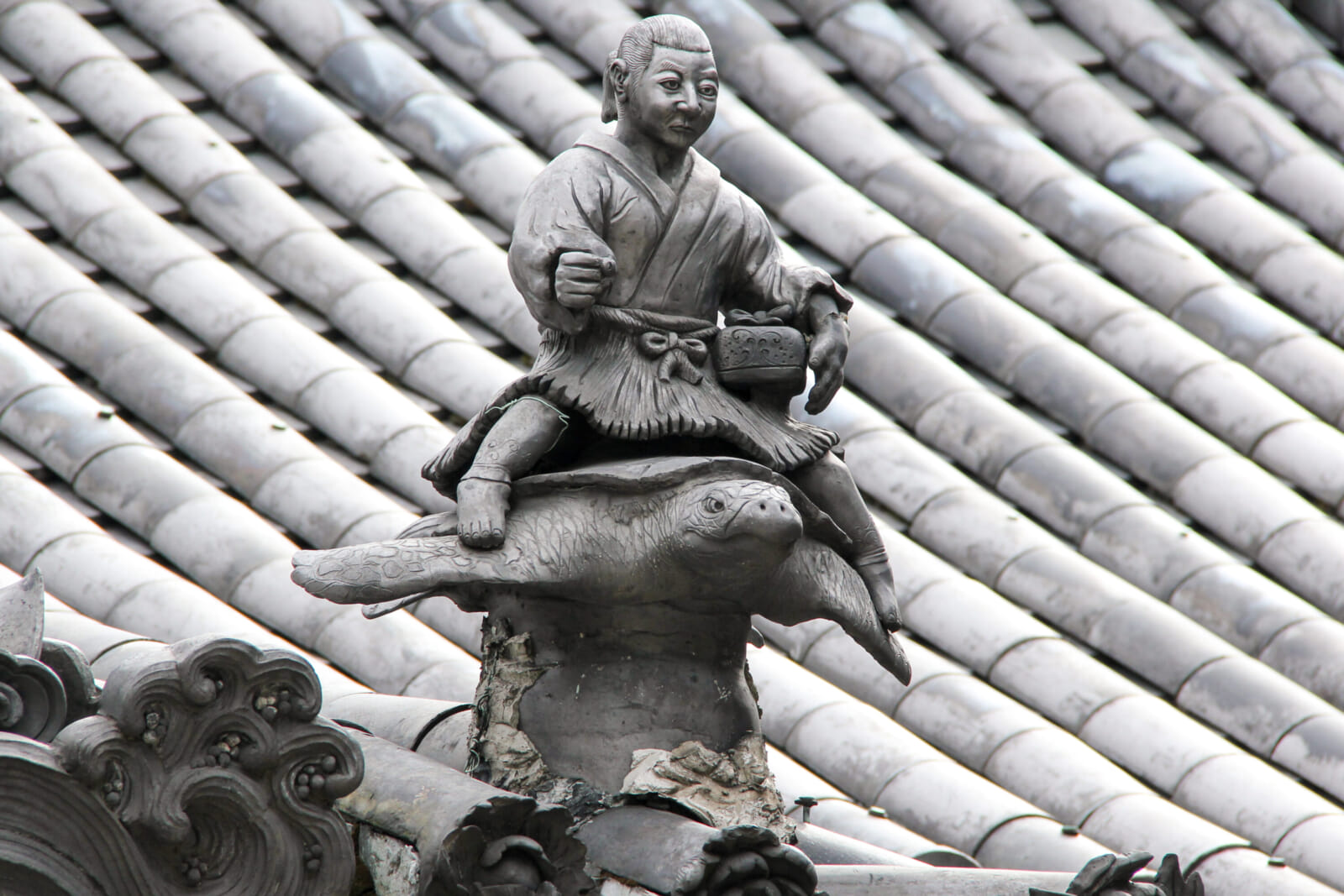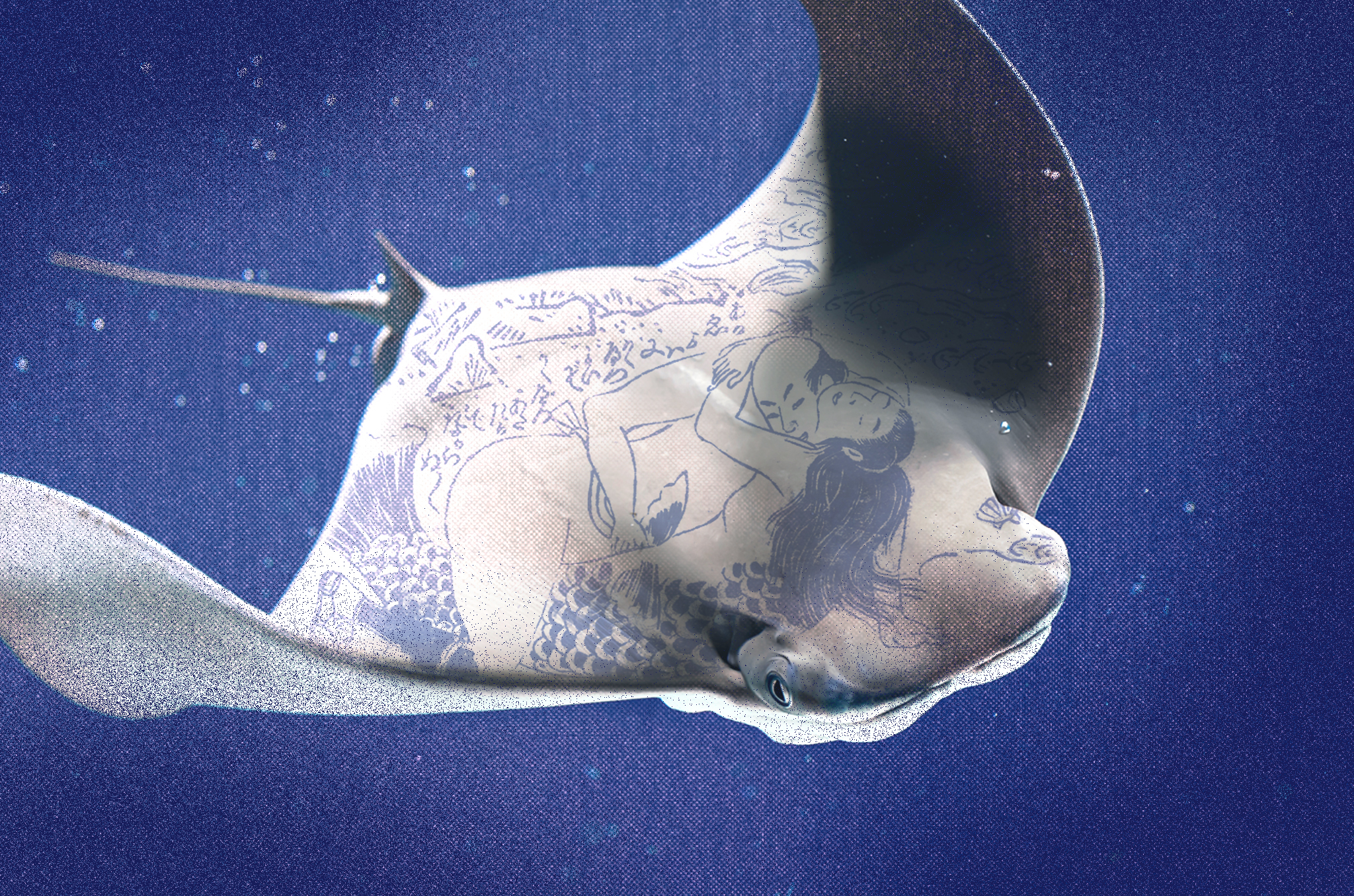In 18th- and 19th-century Japanese art, there was a particularly popular trend of portraying people having sex with animals. As with much adult art from the Edo period, there’s more to the story than mere shock value. A lot of the pieces were comedic, such as the (NSFW) trick portrait by Utagawa Kunisada showing a man having sex with a beautiful woman, which, when opened up, revealed that the man — a bewitched fisherman — was actually mid-coitus with a magical fox, and was being distracted while other foxes stole his fish.
Other “erotic” paintings of this kind used animals as stand-ins for gods, which shouldn’t be too surprising for people familiar with Greek mythology. But then there were paintings and stories of fishermen having sex with stingrays, which don’t seem to fit into either category. What were they about? A lot, as it turns out.
Not a One-Night Stand
Bestiality has been recognized as a great offense in Japan since at least the eighth century. That’s when the Kojiki, the oldest literary source in the country’s history, recorded that after the death of the legendary Emperor Chuai, there was a push to cleanse the land by identifying and eliminating the worst crimes a person could commit. These included things like flaying alive, incest and “mating with horses, cows, chickens and dogs.” You’ll notice no sea life on that list, so … was stingray sex something that actually happened as a kind of moral loophole for lonely fishermen?
Our evidence includes an erotic portrait by Katsukawa Shun’ei from the book Ominameshi (1789) showing human-and-stingray intercourse on a beach. The illustration is accompanied by a somewhat humorous commentary by a flounder in the fisherman’s bucket getting all excited about the scene. If this were all we had to go on, it’d be easy to write the entire thing off as a joke. But there’s more.
In Ketsudai Kamigata Ehon (mid-Edo period) by Terasawa Masatsugu and So’unsai Sensui, there’s a scene of fishermen having sex with a mermaid (thankfully not the type that was just a human head on a fish body) and commenting on how much better it feels than a stingray, implying a lot of … experience with the latter. This belief in people frequently having sex with stingrays most likely goes back to one particular folktale.

A statue of Urashima Taro riding a turtle at the roof of the shrine.
The Tale of the Stingray Wife
The Stingray Wife is a legend from mainland Japan about an incident that supposedly occurred in Okinawa, where a local fisherman caught a magnificent stingray and mated with it, releasing it afterward. A year later, while out at sea, a young ray swam up to the fisherman and spoke in a human voice, telling him that he was his stingray son and that he should come with him. The fisherman was then taken to the palace of the Dragon King, where he met his stingray wife and was treated to a fabulous feast before deciding to go back to his human spouse.
This is obviously a take on the tale of Urashima Taro, which dates back to the eighth century and does not include any bestiality (Taro gets the Dragon King invite after saving a turtle). There is also a possibly older legend of a fisherman from some rural corner of mainland Japan simply fathering a child with a stingray, with his human-fish offspring later finding employment at a mountain hermitage.

Shuri, Okinawa, Japan at Tamaudun, one of the three royal mausoleums of the Ryukyu Kingdom.
Is Xenophobia the Answer?
The fact that The Stingray Wife takes place around Okinawa might help us understand the origin of these stories of human-stingray mating. During the 18th century and much of the 19th century, Okinawa — or rather the Ryukyu Kingdom — was a vassal of Japan after an invasion by the Satsuma domain’s Shimazu clan in 1609. Even so, it remained in the Chinese sphere of influence, so much so that Japan had to utilize the first and only Chinese samurai in history while conducting business with the islands.
To the people of the Edo period, Ryukyu was a foreign, secluded land, and their attitude toward it was basically the same as their attitude toward the more rural parts of their own country: “Who KNOWS what weird things people get to over there?” Let that marinate for a while, and you eventually get tales of fishermen having sex with fish. It’s essentially the Japanese equivalent of the English labeling the Welsh as “sheep-shaggers.”
Why specifically stingrays, though? No one knows the exact answer, but katana swords might have contributed to it. Katana handles had long been covered by stingray skin (oftentimes mistranslated as “shark skin”), which protected the wood from moisture and, thanks to the rough surface, provided a non-slip grip. If you’re going to lie about people having sex with animals, you might as well choose an animal that was essential in the production of a respected weapon for that extra dash of outrage. Or, according to other sources, it had more to do with tales claiming that female stingray genitalia was similar to human genitalia. We decided not to fact-check that one. You understand.









